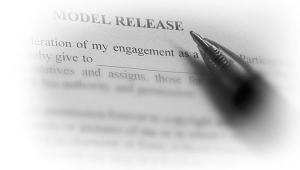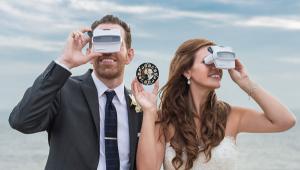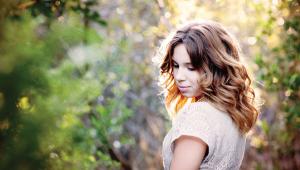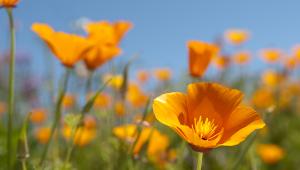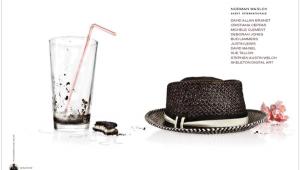Business Trends
Getting Started As A Pro
Tips From Chuck DeLaney, Dean Of NYI
How do you make the transition from
hobbyist to professional? What are some of the basic requirements for success?
How can you get a competitive edge? How do you get started? These are always
questions I get asked in my own seminars and workshops. For some answers, I
interviewed Chuck DeLaney, professional photographer for 25 years and Dean of
the New York Institute of Photography (www.nyip.com),
one of the oldest and largest photography schools in the country.
DeLaney has been the Dean at NYI since 1985 and has a combined career as a photographer, educator, and author. He gives training seminars and workshops and has traveled extensively on free-lance photography assignments. DeLaney is the author of the Allworth Press publications Wedding Photography and Video: The Bride & Groom's Guide and Photography Your Way: A Career Guide to Satisfaction and Success.
Shutterbug: Tell us more about you first; what drew you to teaching after working as a successful professional photographer?
Chuck DeLaney: I have the greatest job in the world because I get to take pictures, talk to photographers and photography students, talk to interesting people in the world of photography, and think about the power of photography and how that power gets greater all the time.
SB: What do you think are some of the "hardware" requirements for getting started as a pro?
CD: In terms of equipment, too many emerging photographers focus too much on "if only I had..." instead of making great images. Photography has an inherent democracy in that looking at a great image, I can't tell what equipment was used. Focus your equipment issues on your marketing issues; what are you selling and who will buy from you? For example, your needs will be different if you are planning to market for weddings or editorial or stock. Some areas even have specialized equipment needs. For most people, get an SLR with appropriate flash equipment--and go! No one is taking a head count on who shoots film and who shoots digital.
SB: What other recommendations do you have to make this transition successfully?
CD: At NYI, I counsel lots of photographers getting into the business of photography and have these recommendations for the "software" or the human side of becoming a successful professional photographer:
1) Take an inventory of yourself. Start with a physical inventory such as appearance and communication skills. Physical inventory can include physical attributes that might interfere with your ability to do the job, or with your ability to be hired for the job. Obviously, a wedding photographer needs to look good and should probably also be able to speak clearly. It would be hard to give instructions to a large wedding party if you had a serious speech impediment, for example. Similarly, photographers who do extreme work outdoors, such as in serious hiking terrain, climbing, or in extreme weather, need to have the physical stamina and energy to do the job.
2) Take the things you know the best, which you have a passion for, which you have an interest in, and figure out how to make images that show what you love about the subject. If computers are your interest, photograph a motherboard or a hard drive in a way I have never seen that will tell me something I did not know before.
3) Be in business starting right now, get business cards with a phone number, an e-mail address. Associate your name with the word "photographer." This can help you get on the scene, in the scene, and give you credentials and credibility.
SB: Have you ever seen cases where someone's passion for what they want to do overcomes physical obstacles?
CD: Anything is possible. Some years back we had an NYI student who had come down with multiple sclerosis in his mid-20s, left his engineering job and took up photography. He did serious nature work although he was very weak and had to rest frequently. Other photographers were so impressed with his grit that they would assist him in getting into tough locations such as Yellowstone in the deep of winter.
There used to be a small woman who worked as a news photographer for one of New York City's daily papers. In tight crowd situations, such as a candidate or celebrity surrounded by TV and still photographers, rather than try to shoot from above with a "Hail Mary" reach, or push her way into the crowd, she would actually sneak between the legs of the other photographers and make her way to the heart of the action.
SB: What about marketing knowledge, what do you recommend?
CD: Simple preparations include learning how to pitch--whether to a newspaper or for an assisting job; learn everything about the person or the company ahead of time. Be prepared and do your homework. If they have a website, check it out before your interview. Learn phone skills and show respect for the arena you are trying to get into. Try questions like, "Hi, is this a good time for you to talk?" Don't arrive early or late for an appointment. As to portfolio presentations, don't apologize! Stop and think. Before you present anything it should be pre-screened, technically perfect--I would much rather see 10 great images instead of finding 10 good images mixed among 30. Photo organizations have a tremendous amount to teach emerging photographers, groups such as NANPA (North American Nature Photography Association), WPPI (Wedding & Portrait Photographers International), and PPA (Professional Photographers of America). Start with your state chapter (author's note: for example, in California we have the PPC, Professional Photographers of California)--go to meetings and meet people. The initials behind your name are the least important part of it--the competitions are good but don't necessarily reflect marketing issues. Answer the question, would anyone buy this? It is the people contact that is important, including the other photographers you need to connect with.
SB: There is a lot of buzz about the redefining of professional photography markets and careers. What are your thoughts on this topic?
CD: I hear a lot of old-timers lament about the way it used to be. Well, things are not the way they used to be! I truly believe there are more opportunities in photography today than ever. What has changed is that there are now lots of smaller, specialized market opportunities to make money in and not just one large market. I believe that the future is careers where photography is part of the job description. Here are some examples of career combinations:
· I know several wedding photographers who also offer limo rentals or DJ services, so the "happy couple" can have a one-stop shopping experience.
· Theatrical lighting design expertise would make you the perfect photographer for small theater and dance companies.
· Combining photography with any skill or activity that you know well can lead to a successful part-time photo business. At NYI, we had a racecar driver who was injured in a crash and became a photographer for car crews despite being confined to a wheelchair.
· Become a travel writer and a photographer.
· Develop any other kind of writing and photography skills.
· Combine web design and photography.
· Become the photographer for your employer's corporate newsletter.
SB: In conclusion, what would you offer as words of inspiration to a photographer getting started or redefining their career today?
CD: The power of the photographic image has never been greater than it is today. The electronic distribution of images minutes after they were taken redoubles the opportunities for sale and resale. Photography has never been more powerful; we are at the most exciting time to be and to become a photographer.
DeLaney has been the Dean at NYI since 1985 and has a combined career as a photographer, educator, and author. He gives training seminars and workshops and has traveled extensively on free-lance photography assignments. DeLaney is the author of the Allworth Press publications Wedding Photography and Video: The Bride & Groom's Guide and Photography Your Way: A Career Guide to Satisfaction and Success.
Shutterbug: Tell us more about you first; what drew you to teaching after working as a successful professional photographer?
Chuck DeLaney: I have the greatest job in the world because I get to take pictures, talk to photographers and photography students, talk to interesting people in the world of photography, and think about the power of photography and how that power gets greater all the time.
SB: What do you think are some of the "hardware" requirements for getting started as a pro?
CD: In terms of equipment, too many emerging photographers focus too much on "if only I had..." instead of making great images. Photography has an inherent democracy in that looking at a great image, I can't tell what equipment was used. Focus your equipment issues on your marketing issues; what are you selling and who will buy from you? For example, your needs will be different if you are planning to market for weddings or editorial or stock. Some areas even have specialized equipment needs. For most people, get an SLR with appropriate flash equipment--and go! No one is taking a head count on who shoots film and who shoots digital.
SB: What other recommendations do you have to make this transition successfully?
CD: At NYI, I counsel lots of photographers getting into the business of photography and have these recommendations for the "software" or the human side of becoming a successful professional photographer:
1) Take an inventory of yourself. Start with a physical inventory such as appearance and communication skills. Physical inventory can include physical attributes that might interfere with your ability to do the job, or with your ability to be hired for the job. Obviously, a wedding photographer needs to look good and should probably also be able to speak clearly. It would be hard to give instructions to a large wedding party if you had a serious speech impediment, for example. Similarly, photographers who do extreme work outdoors, such as in serious hiking terrain, climbing, or in extreme weather, need to have the physical stamina and energy to do the job.
2) Take the things you know the best, which you have a passion for, which you have an interest in, and figure out how to make images that show what you love about the subject. If computers are your interest, photograph a motherboard or a hard drive in a way I have never seen that will tell me something I did not know before.
3) Be in business starting right now, get business cards with a phone number, an e-mail address. Associate your name with the word "photographer." This can help you get on the scene, in the scene, and give you credentials and credibility.
SB: Have you ever seen cases where someone's passion for what they want to do overcomes physical obstacles?
CD: Anything is possible. Some years back we had an NYI student who had come down with multiple sclerosis in his mid-20s, left his engineering job and took up photography. He did serious nature work although he was very weak and had to rest frequently. Other photographers were so impressed with his grit that they would assist him in getting into tough locations such as Yellowstone in the deep of winter.
There used to be a small woman who worked as a news photographer for one of New York City's daily papers. In tight crowd situations, such as a candidate or celebrity surrounded by TV and still photographers, rather than try to shoot from above with a "Hail Mary" reach, or push her way into the crowd, she would actually sneak between the legs of the other photographers and make her way to the heart of the action.
SB: What about marketing knowledge, what do you recommend?
CD: Simple preparations include learning how to pitch--whether to a newspaper or for an assisting job; learn everything about the person or the company ahead of time. Be prepared and do your homework. If they have a website, check it out before your interview. Learn phone skills and show respect for the arena you are trying to get into. Try questions like, "Hi, is this a good time for you to talk?" Don't arrive early or late for an appointment. As to portfolio presentations, don't apologize! Stop and think. Before you present anything it should be pre-screened, technically perfect--I would much rather see 10 great images instead of finding 10 good images mixed among 30. Photo organizations have a tremendous amount to teach emerging photographers, groups such as NANPA (North American Nature Photography Association), WPPI (Wedding & Portrait Photographers International), and PPA (Professional Photographers of America). Start with your state chapter (author's note: for example, in California we have the PPC, Professional Photographers of California)--go to meetings and meet people. The initials behind your name are the least important part of it--the competitions are good but don't necessarily reflect marketing issues. Answer the question, would anyone buy this? It is the people contact that is important, including the other photographers you need to connect with.
SB: There is a lot of buzz about the redefining of professional photography markets and careers. What are your thoughts on this topic?
CD: I hear a lot of old-timers lament about the way it used to be. Well, things are not the way they used to be! I truly believe there are more opportunities in photography today than ever. What has changed is that there are now lots of smaller, specialized market opportunities to make money in and not just one large market. I believe that the future is careers where photography is part of the job description. Here are some examples of career combinations:
· I know several wedding photographers who also offer limo rentals or DJ services, so the "happy couple" can have a one-stop shopping experience.
· Theatrical lighting design expertise would make you the perfect photographer for small theater and dance companies.
· Combining photography with any skill or activity that you know well can lead to a successful part-time photo business. At NYI, we had a racecar driver who was injured in a crash and became a photographer for car crews despite being confined to a wheelchair.
· Become a travel writer and a photographer.
· Develop any other kind of writing and photography skills.
· Combine web design and photography.
· Become the photographer for your employer's corporate newsletter.
SB: In conclusion, what would you offer as words of inspiration to a photographer getting started or redefining their career today?
CD: The power of the photographic image has never been greater than it is today. The electronic distribution of images minutes after they were taken redoubles the opportunities for sale and resale. Photography has never been more powerful; we are at the most exciting time to be and to become a photographer.
- Log in or register to post comments



